| Object : | NGC 2023 |
| Coordinates/Direction : | RA: 05h41m, DEC: -02o15' |
| Object size : | 10' |
| Object magnitude : | - |
| More to know : |
Simbad:
https://en.wikipedia.org/ wiki/ NGC 2023
Wikipedia:
https://en.wikipedia.org/ wiki/ Horsehead Nebula |
| Date : | 2025-01-19 |
| Time (UT) : | 18:44 - 20:53, local time +1 hour |
| Exp. time : | 30x240 seconds, iso400, dithering mode every 3rd |
| Image process tool : | Siril, Gimp, Irfanview |
| Processing : | Flat, photo metric color cal |
| Weather : | Moon phase 72%, Clear sky to the South, Temperature -1o C |
| Comment : |
This evening I went to a dark place with my friend Rolf and we had a clear night with no Moon.
This photo is taken at a Bortle class 4 environment, one of the better places in Stockholm.
The Moon rise an hour before midnight, but we were finished before that.
Longer exposures and many of them helps.
Now it's easy to see the Horsehead nebula (Barnard 33).
It's natural color, I haven't altered the color balance since it was astrometry calibrated, but increased the contrast.
A bit noisy as usual, 4 hours exposure or more is needed.
Longer focal length has been nice too, but my APO refractor is a f/7 system, need at least 15 hours exposure through that telescope, 1/3 of the view compared to this photo.
In the full resolution wide field image there are many objects, look at this plate solved image:
NGC 2023 plate solved.
To the left of the full resolution image there is a big red arc, it's ionized hydrogen gas, H-Alpha radiation as other red areas of this photo. |
| Exp. time : | 49x60 seconds, iso400, dithering mode every 3rd |
| Image process tool : | Siril, Gimp, Irfanview |
| Processing : | Flat, photo metric color cal |
| Weather : | Moon phase 95%, Clear sky, High humidity, Temperature +2o C |
| Comment : |
A new try on the Horsehead nebula.
This time I got 49 minutes of exposure.
If I had started 10 minutes earlier I had got 60 minutes, that's the limit from our balcony.
The humidity was very high, you see it on the bright stars what a big blue halo they get.
Taken photography of it from a dark place and twice the exposure could be something.
Even better with my big refractor, but then I need 8 times the exposure. |
| Exp. time : | 29x60 seconds, iso400, dithering mode |
| Image process tool : | Siril, Gimp, Irfanview |
| Processing : | Flat, photo metric color cal |
| Weather : | Clear sky, Moon phase - , temperature o C |
| Comment : |
I aimed for the nebula IC424, this is one corner of that photo. |
| Exp. time : | 44x30 seconds, iso1600, dithering mode |
| Image process tool : | Siril, Gimp, Irfanview |
| Processing : | Calibrated dark, flat and increase the contrast |
| Weather : | clear |
| Comment : |
Maybe you have seen the beautiful Horsehead nebula in some astronomy book.
I have never taken any photo of the object before so this is the first time.
When looking in the star chart that control the telescope it wasn't there.
I aimed for a nearby nebula instead, NGC 2023.
It's a very bright reflection nebula in contrast to the Horsehead nebula.
This photo I took from our balcony and I wasn't sure if it was possible to see that weak nebula with all light pollution we have here.
This is what I got, little bit confusing and what is nebulas and what is light pollution.
The three bright stars is the belt in the Orion constellation. |
| Date : | 2022-12-23 |
| Time (UT) : | 21:31 to 22:12 |
| Comment : |
A crop at the center of the photo make it easier to find the objects.
The Horsehead nebula is on the limit to be detected. Hold the mouse over the image and text appear that explain what is what.
There are a lot of other interesting objects and what looks like stars are nebulas.
Next time I try this I must be at a dark place.
Now I could only use short exposure times, I have to increase it to two or four minutes.
There is a lot of H-Alpha emission in the area around M42, my camera isn't made for that 565 nm radiation because it's on the limit to what our eye can detect.
But you see it as a weak red radiation. |
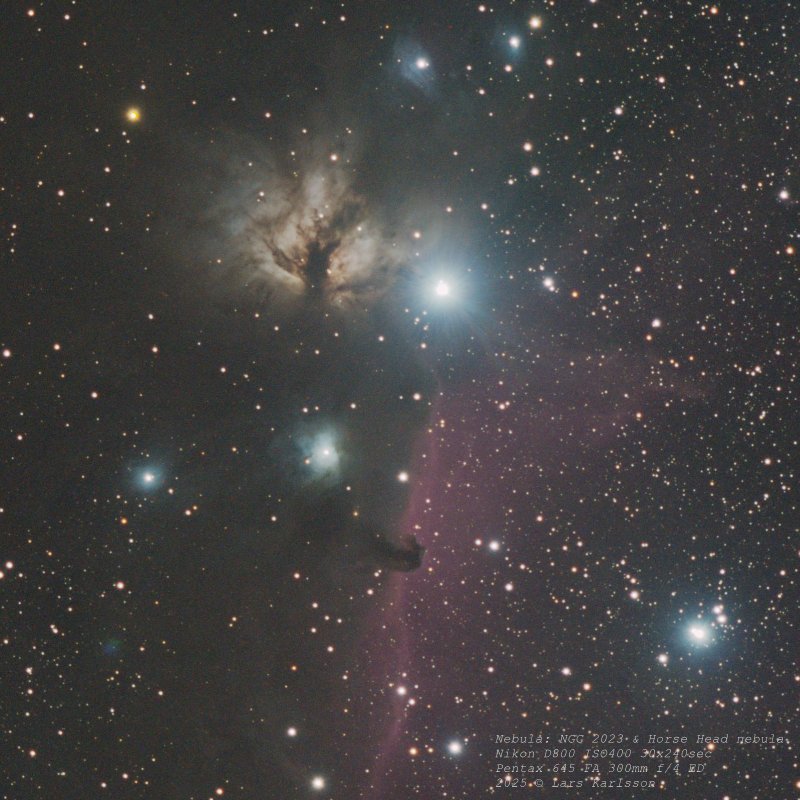 (Click on image and get a full resolution image in a new window)
(Click on image and get a full resolution image in a new window)
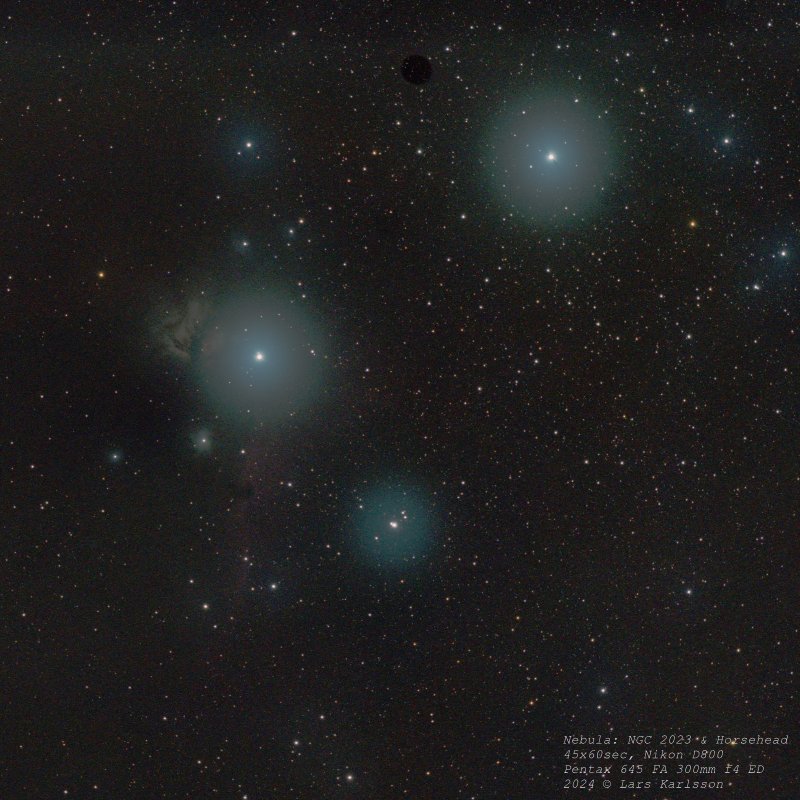 (Place the cursor over the image to get info)
(Place the cursor over the image to get info)
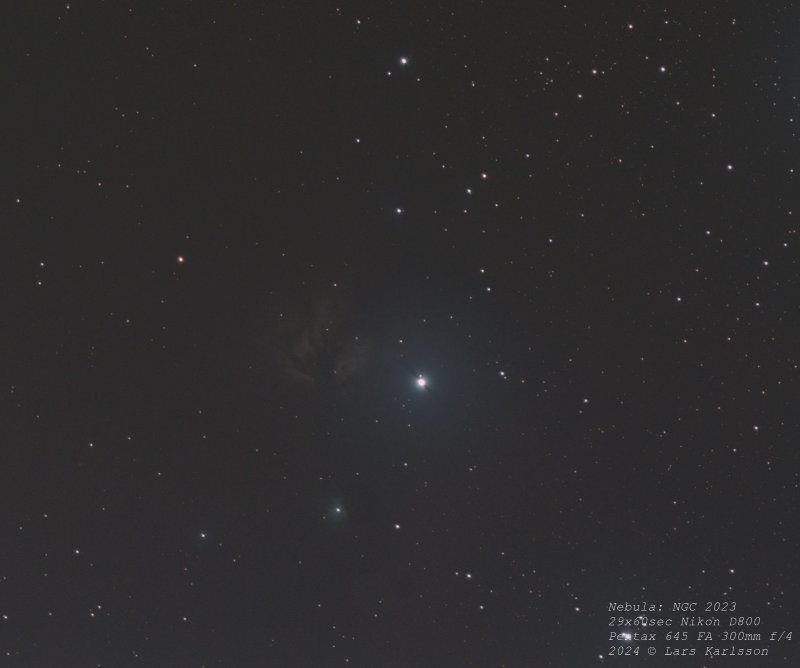
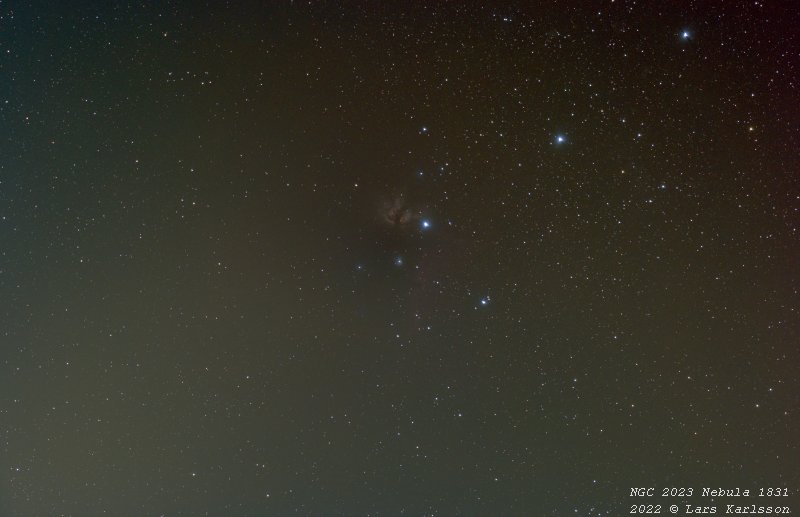
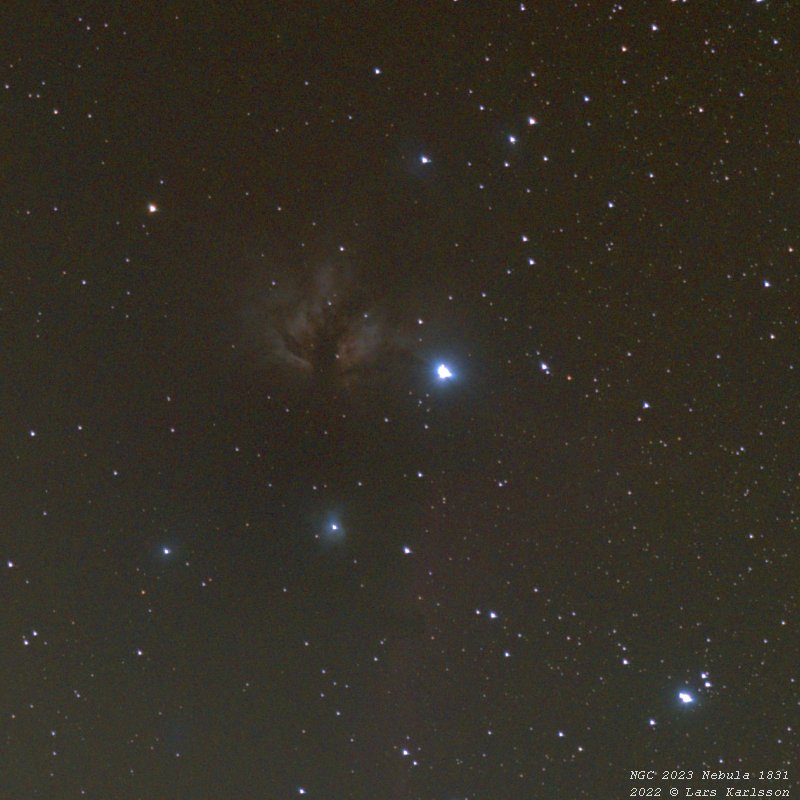 (Place the cursor over the image to get info)
(Place the cursor over the image to get info)